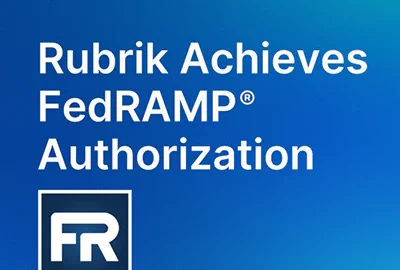Insight by Pluralsight
How to address the cloud literacy gap and improve cloud ROI
What’s needed for agencies to improve their return on investment in cloud? We talk with Pluralsight’s Drew Firment to understand ways to democratize the...
Worldwide spending on commercial cloud computing services is approaching $500 billion. Eventually, cloud will account for more than 50% of organizational information technology budgets.
Yet by some estimates, half of planned cloud migration projects miss their schedules — sometimes by as much as two years. Why? Drew Firment, senior vice president of cloud transformation for A Cloud Guru | Pluralsight, said it’s because of a lack of cloud computing skills in the very organizations seeking a solid return on their investments in cloud.
A survey conducted by Pluralsight showed that 75% of IT leaders in government are pursuing cloud-first strategies and that they want to use the cloud to drive value, Firment said during Federal News Network’s Industry Exchange Cloud.
“The reality is,” Firment said, “we also found out that only 8% of the workforce has the skills required to deliver on that. There’s a gap there that we need to figure out if we want to really harness the power of cloud computing to be able to drive the mission of these agencies.”
Skill gap in critical cloud competencies
Why the gap? After all, whether using clouds or their own data centers, IT managers want to host applications and data, and make them available to users.
The difference is that the data center model requires skills in planning, budgeting for and acquiring servers and other gear. It requires know-how in provisioning, operating and maintaining systems.
By contrast, operating in the cloud pushes all that activity to the cloud services providers with just a few keystrokes, Firment noted. To take advantage of cloud’s value potential, agency IT leaders need to understand infrastructure as code and how cloud’s elasticity can be used to optimize workloads and services.
“It’s really a mindset shift for leaders to be able to understand cloud computing at the organizational level, the agency level,” he said. “Then that trickles to the individuals.”
Beyond that, cloud also requires additional specific knowledge and skills. How can agencies get started?
“Cloud is a culture, and there’s language,” Firment said. “I generally recommend starting off with what I would call cloud literacy.” Literacy encompasses understanding cloud terms like elasticity, scalability and resiliency, he said.
Translating cloud talk
Firment said a typical cloud discussion might go something like, “If I walked into a room and I said, ‘Hey, we want to spin up a VPC with an IGW. And we’ll maybe use ELB in front of some EC-II with EBS and RDS.” That alphabet soup is cloud shorthand.
“All I asked for was a private data center with some a server storage and a database,” Firment said.
“A really great way to get cloud literate,” he added, “is using one of the introductory cloud certifications offered by, oh, pick a cloud provider.” AWS offers what it calls cloud practitioner and cloud fundamentals certifications, for instance.
By establishing what Firment called an infantry of employees fluent in cloud-speak, the culture and knowledge can diffuse throughout an organization. “It’s all based upon your infantry and being able to democratize those skills in that language,” he said. “That’s fundamental to achieving success for any organization.”
Pluralsight has positioned itself as a nonproprietary skill guru. “We’re a one-stop shop across all the different cloud providers and cloud-adjacent technologies,” Firment said. The company offers experiential learning in diverse topics such as Kubernetes, Python and other programming languages, and security in cloud computing, he said.
“There’s a separation between those leaders that are investing in their workforce,” he said, “versus the laggards that still don’t have a strategic plan for how they’re going to approach workforce development.”
But a strategic plan for workforce development is essential, Firment advised. That can help lead to cloud success with measurable metrics and by maturing the organization’s cloud capabilities, said Firment, who has a patent in measuring cloud maturity.
He identified three key metrics:
- The amount of workloads migrating to the cloud.
- Whether a migration was accompanied by the desired elasticity, resiliency and security within a well-architected cloud framework.
- Cost efficiency, such as whether on- or off-cloud workload instances match user patterns.
Achieving excellence in cloud computing, Firment concluded, starts with investing in training and skills development and then spreading that knowledge throughout the organization.
“You just have to make sure that you are assessing your maturation in terms of organizational skills and how well you’ve democratized that. In my experience, the two are very tightly integrated, and you can’t have one without the other.”
To listen and watch other Industry Exchange Cloud sessions, visit our event page.
Copyright © 2025 Federal News Network. All rights reserved. This website is not intended for users located within the European Economic Area.
Related Stories
Featured speakers
-

Drew Firment
Senior Vice President, Cloud Transformation, A Cloud Guru | Pluralsight
-

Tom Temin
Host, The Federal Drive, Federal News Network
Upcoming Events
Related Stories
Top Stories

Drew Firment
Senior Vice President, Cloud Transformation, A Cloud Guru | Pluralsight
Drew works closely with business and technology leaders to accelerate cloud adoption by migrating talent to the cloud. Drew was previously Director of Cloud Engineering at Capital One, where he led enterprise cloud operations within their Cloud Center of Excellence and migrated the early adopters of Amazon Web Services (AWS) into production. Drew is recognized by Amazon as an AWS Community Hero for his ongoing efforts to build inclusive and sustainable learning communities.

Tom Temin
Host, The Federal Drive, Federal News Network
Tom Temin has been the host of the Federal Drive since 2006 and has been reporting on technology markets for more than 30 years. Prior to joining Federal News Network, Tom was a long-serving editor-in-chief of Government Computer News and Washington Technology magazines. Tom also contributes a regular column on government information technology.






